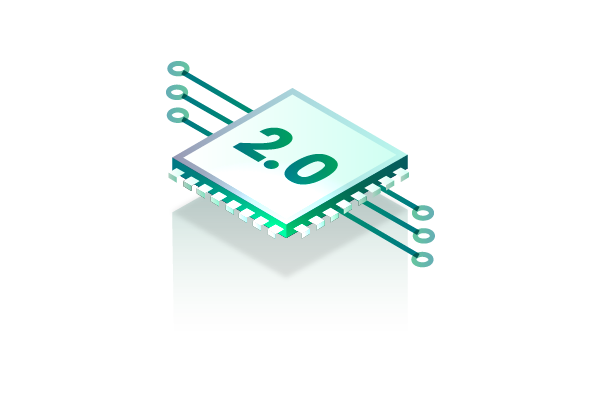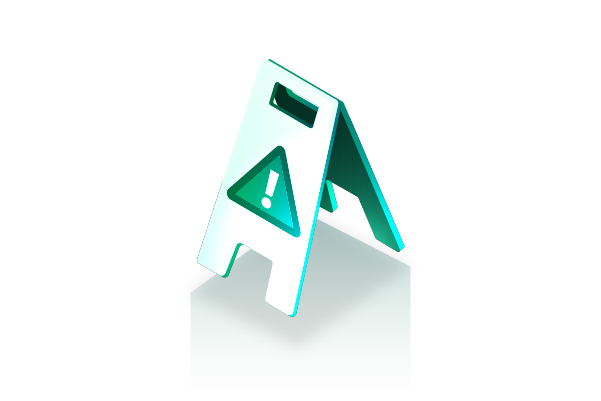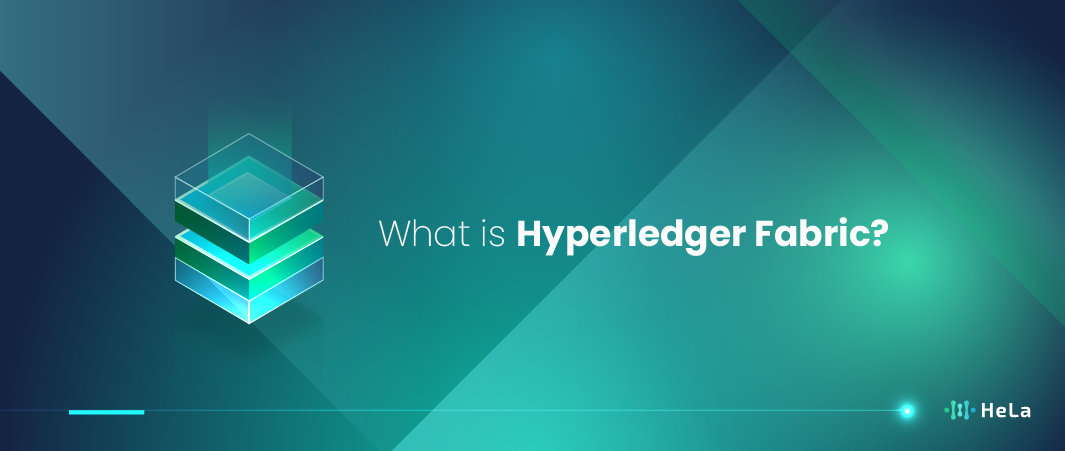Hyperledger Fabric stands at the forefront of enterprise blockchain solutions, offering a unique platform for implementing robust and scalable applications. As we venture into this detailed exploration, it’s crucial to understand the essence of Hyperledger Fabric, its place in the blockchain universe, and why businesses are turning towards this technology for solutions that are not just innovative but also practical and secure. This platform isn’t just about creating digital ledgers; it’s about revolutionizing how businesses transact, interact, and evolve in an increasingly digital world.
Delving further into Hyperledger Fabric, it’s essential to grasp the core concepts that make it a standout in the blockchain community. Its architecture, designed for confidentiality, scalability, and security, paves the way for creating applications that can transform industries, streamline processes, and establish a new paradigm for trust in business networks. As we unfold these layers, we will also touch upon the inherent risks involved in deploying blockchain solutions and how Hyperledger Fabric addresses these challenges head-on.
The introduction of Hyperledger Fabric 2.0 marks a significant milestone in the evolution of enterprise blockchain technology. With its enhanced features and capabilities, Version 2.0 promises not just improvements over its predecessor but a new horizon of opportunities for businesses looking to leverage blockchain technology. As we embark on this journey through the realms of Hyperledger Fabric, prepare to uncover the intricate tapestry of technology, innovation, and visionary foresight that defines this groundbreaking platform.
What is Hyperledger Fabric?

Hyperledger Fabric stands as a beacon for enterprises seeking a blockchain solution tailored to their specific requirements for privacy, efficiency, and control. It’s part of the Hyperledger suite, an umbrella project of open-source blockchains and related tools, hosted by the Linux Foundation. This particular platform is designed with a permissioned network model in mind, which contrasts sharply with the open and decentralized nature of public blockchains like Bitcoin and Ethereum. In a permissioned blockchain, participation is restricted to entities vetted by the network’s governing body, ensuring a level of privacy and security that’s often necessary for corporate contexts.
One of the hallmark features of Hyperledger Fabric is its modular architecture. This design philosophy means that its core components, such as the ledger, consensus mechanism, and smart contract interpreter (known as “chaincode” in Fabric), can be customized or replaced according to the specific needs of a project. This modularity extends to its membership service provider (MSP), which manages identities and authenticates participants, and to its consensus mechanism, allowing organizations to choose the model that best fits their requirements for transaction validation.
Also Read: What Is a 51% Attack? Understanding Risks, Examples, and Costs
The platform’s emphasis on confidentiality, governance, and performance makes it an attractive choice for industries ranging from finance and healthcare to supply chain management and government services. By enabling organizations to create private channels between specific network members, Hyperledger Fabric ensures that sensitive information is shared only with those who need to know, further enhancing privacy and security.
Hyperledger Fabric also addresses some of the scalability and efficiency issues that can plague traditional public blockchains. Its ability to process transactions quickly and efficiently, without the need for energy-intensive proof-of-work consensus mechanisms, allows businesses to integrate blockchain technology into their operations without sacrificing performance.
In summary, Hyperledger Fabric offers a comprehensive and flexible blockchain solution for enterprises looking to leverage the benefits of distributed ledger technology while maintaining strict control over access, privacy, and compliance. Its design acknowledges the unique challenges faced by businesses and provides a robust framework for developing blockchain-based applications that can be customized to fit the intricate demands of various industries.
The Architecture of Trust and Efficiency
Hyperledger Fabric’s architecture is designed to optimize both trust and efficiency in blockchain networks, setting it apart from other blockchain platforms. Its innovative consensus mechanism is a key feature, dividing the transaction process into three separate stages: endorsement, ordering, and validation. This tripartite approach streamlines transactions, significantly improving the system’s overall efficiency.
In the endorsement phase, transactions are initially verified by a select group of network participants. This ensures that all transactions meet the network’s specific criteria before they are forwarded. The ordering phase then sequences transactions chronologically, preparing them for addition to the blockchain. Finally, in the validation phase, the transactions are checked for consistency and compliance with the network’s rules before being officially recorded on the blockchain. This meticulous process not only accelerates transaction processing but also enhances the integrity and security of the data recorded on the blockchain.
Another standout feature of Hyperledger Fabric is its chaincode functionality, which allows for the execution of smart contracts in a secure and isolated environment. Chaincode, in essence, is Hyperledger Fabric’s version of smart contracts, enabling users to encode business contracts into the blockchain. By executing these contracts in isolation, Hyperledger Fabric ensures that the business logic of contracts is kept private and secure, further bolstering the platform’s security and performance.
Overall, the architecture of Hyperledger Fabric is strategically crafted to foster a blockchain environment that is both highly efficient and trustworthy. Its unique consensus model and the inclusion of chaincode functionality represent significant advancements in the realm of blockchain technology, providing a robust foundation for building and deploying decentralized applications that require both speed and security.
Risks and Mitigation in Hyperledger Fabric

When discussing risks and mitigation strategies in the context of Hyperledger Fabric, it’s important to delve into both the specific challenges that users might face and the comprehensive measures that can be taken to address these challenges. Hyperledger Fabric, as an enterprise-grade permissioned blockchain framework, offers a versatile platform for building a variety of blockchain-based applications. Nonetheless, its complexity and the critical nature of the applications it supports necessitate a careful examination of potential vulnerabilities and the development of effective countermeasures.
Technical Risks
- Network Vulnerabilities: Being a distributed ledger technology, Hyperledger Fabric’s security is paramount. Network vulnerabilities can arise from misconfigurations, outdated software, or weak encryption practices. To mitigate these risks, it is recommended to follow best security practices, including regular network audits, updating software to incorporate the latest security patches, and implementing strong encryption measures for data in transit and at rest.
- Smart Contract Bugs: Smart contracts (or chaincode, in the context of Hyperledger Fabric) are self-executing contracts with the terms of the agreement directly written into lines of code. Bugs or flaws in this code can lead to unexpected behavior, including financial losses. Mitigation strategies include thorough testing of smart contracts, employing static code analysis tools, and conducting code audits by independent security experts.
Operational Risks
- Governance Concerns: Effective governance is crucial for the smooth operation of a blockchain network, especially in permissioned environments like Hyperledger Fabric where access control and member roles are key components. Risks include disputes among members, mismanagement of permissions, and lack of consensus on network upgrades. Establishing clear governance protocols, decision-making processes, and dispute resolution mechanisms can help mitigate these risks.
- Compliance Issues: Compliance with regulatory requirements is a significant concern for enterprises, particularly those operating in highly regulated industries. The immutable nature of blockchain can pose challenges in this regard, especially in terms of data privacy laws and the right to be forgotten. To address these concerns, organizations should design their Hyperledger Fabric applications with compliance in mind, potentially incorporating mechanisms for data privacy and regulatory reporting from the outset.
Mitigation Through Architecture and Community
- Robust Architecture: Hyperledger Fabric’s architecture is designed with modularity and flexibility in mind, allowing organizations to tailor their blockchain network to specific needs and risk profiles. Features such as channel architecture for data segregation, private data collections for confidentiality, and the endorsement policy for transaction validation provide a robust framework for mitigating various risks.
- Community Commitment: The Hyperledger community, backed by the Linux Foundation, plays a critical role in identifying and addressing vulnerabilities, developing best practices, and fostering innovation. Active participation in the community can provide access to a wealth of knowledge and resources, enabling organizations to stay ahead of potential risks and leverage collective expertise for risk mitigation.
While Hyperledger Fabric presents certain risks stemming from technical and operational challenges, its sophisticated architecture combined with a proactive approach to governance, compliance, and community engagement offers a comprehensive framework for risk mitigation. Organizations adopting Hyperledger Fabric can leverage these strengths to build secure, efficient, and compliant blockchain solutions.
Hyperledger Fabric 2.0: What’s New?
The release of Hyperledger Fabric 2.0 represents a significant milestone in the evolution of enterprise blockchain technology. This version introduces several key enhancements that aim to address some of the challenges and limitations of previous versions, making it more suitable for a wide range of business applications. Here’s a closer look at what’s new and why these features are important:
- Enhanced Governance for Smart Contracts: Hyperledger Fabric 2.0 introduces a more sophisticated governance model for smart contracts, now referred to as “chaincode” in the Hyperledger ecosystem. This model requires that chaincode on a channel be explicitly approved by a majority of organizations participating in the channel before it can be deployed. This ensures that no single organization can unilaterally make changes that affect the entire network, promoting a more democratic and secure approach to managing the business logic that governs transactions on the blockchain.
- Decentralized Consensus Mechanisms: One of the key features of Hyperledger Fabric 2.0 is the introduction of new decentralized consensus mechanisms that enhance the platform’s flexibility and scalability. Unlike the previous version, which relied heavily on a Solo or Kafka-based ordering service, Fabric 2.0 supports Raft, a more decentralized, crash fault-tolerant ordering service. This allows for a more resilient and scalable network by distributing the consensus process across multiple nodes, thereby reducing the potential for single points of failure and improving the overall robustness of the network.
- Improved Performance: Hyperledger Fabric 2.0 includes several performance improvements that make the network more efficient and faster. These enhancements include optimizations to the chaincode execution process, which now allows for parallel transactions that do not contend for the same state within the ledger. This means that transactions can be processed more quickly and efficiently, leading to higher throughput and lower latency in transaction processing.
- New Chaincode Lifecycle Management: The new chaincode lifecycle management process introduced in Fabric 2.0 provides a more secure and manageable way to upgrade chaincodes. It allows for a more controlled and coordinated upgrade process, requiring an explicit agreement from a specified percentage of channel participants before a new version of a chaincode can be deployed. This prevents unauthorized or accidental upgrades and ensures that all stakeholders have agreed to the change.
- Private Data Collections Enhancements: Fabric 2.0 expands on the capabilities of private data collections, a feature that allows organizations to selectively share data on the blockchain. Improvements in this area include better management and configuration of private data collections, as well as enhanced privacy and confidentiality for sensitive business transactions.
These advancements in Hyperledger Fabric 2.0 are designed to make the platform more secure, scalable, and adaptable to the needs of businesses. By addressing key challenges such as governance, consensus, performance, and privacy, Fabric 2.0 sets a new standard for enterprise-grade blockchain solutions, offering organizations a robust foundation for building and deploying decentralized applications.
Implementing Hyperledger Fabric: Considerations and Best Practices

Implementing Hyperledger Fabric involves a series of critical decisions and meticulous planning to ensure its successful deployment and operation within an organization or a consortium. Hyperledger Fabric is an open-source blockchain framework that enables the development of blockchain-based applications or solutions with a modular architecture. This adaptability allows organizations to create private blockchain networks that can cater to specific business needs. However, to fully leverage the benefits of Hyperledger Fabric, several key considerations and best practices should be taken into account:
- Network Design and Architecture: The design of the blockchain network is fundamental. Organizations must decide on the structure of their Hyperledger Fabric network, including the number of channels to be created, the deployment model (cloud-based, on-premises, or hybrid), and the network’s overall architecture. This requires understanding the needs of the application and the expected transaction volume.
- Member Management and Identity Services: Hyperledger Fabric offers a permissioned network where all participants have known identities. Managing these identities through a Membership Service Provider (MSP) is crucial for maintaining network security and access control. Organizations must establish protocols for enrolling new members, managing credentials, and revoking access when necessary.
- Consensus Mechanism: Unlike public blockchains that use proof-of-work or proof-of-stake mechanisms, Hyperledger Fabric allows for the selection of a consensus mechanism that best suits the network’s requirements. This choice impacts the network’s scalability, performance, and security. Considerations include the complexity of transactions, the need for privacy, and the level of trust among participants.
- Smart Contracts and Chaincode Development: Smart contracts, or chaincode in Hyperledger Fabric, are at the heart of blockchain applications. Developing secure, efficient, and accurate smart contracts is essential. Best practices include thorough testing, modular design for reusability, and ensuring that contracts are upgradable to accommodate future changes.
- Privacy and Confidentiality: One of the key advantages of Hyperledger Fabric is its support for private transactions and confidential contracts through channels and private data collections. Organizations must carefully plan which data should be private and how to implement these features to meet regulatory and business privacy requirements.
- Performance and Scalability: Performance tuning and scalability planning are vital for the long-term success of a blockchain network. This includes optimizing chaincode, choosing the right database for the ledger (CouchDB or LevelDB), and planning for future growth in terms of transaction volume and network size.
- Governance and Policy Management: Establishing a clear governance model for the blockchain network is essential. This includes policies for consensus, membership, and network changes. A well-defined governance structure ensures smooth operation and helps resolve disputes.
Also Read: Top 10+ Biggest Blockchain Companies to Know in 2024
- Security Considerations: Security is paramount in any blockchain implementation. This encompasses not only the cryptographic aspects but also network security, including protection against unauthorized access and mitigating potential threats.
- Interoperability and Integration: For organizations that operate in ecosystems with different blockchain platforms or require integration with existing systems, interoperability and integration capabilities are important. This may involve using APIs, middleware, or developing custom solutions to ensure seamless operation across different environments.
- Monitoring and Maintenance: Continuous monitoring of the network’s health, performance, and security is essential. Tools and practices should be in place for regular audits, performance monitoring, and updates to the blockchain network and its components.
Adopting Hyperledger Fabric is a strategic decision that can offer significant advantages in terms of transparency, efficiency, and trust. By carefully considering these factors and adhering to best practices, organizations can ensure a robust, secure, and efficient blockchain network that meets their business needs.
Conclusion
Hyperledger Fabric represents a monumental leap in the realm of enterprise blockchain solutions. Its commitment to providing a secure, scalable, and flexible platform aligns with the evolving needs of modern businesses. As we’ve seen, the core concepts of Hyperledger Fabric lay a strong foundation for trust and efficiency in digital transactions. However, it’s also vital to navigate the associated risks with a strategic approach and a clear understanding of the technology.
The introduction of Hyperledger Fabric 2.0 marks a new era in blockchain for business, offering enhanced features and capabilities that promise to revolutionize how enterprises operate and interact. As businesses continue to explore and adopt this technology, the potential for innovation and transformation seems boundless.
In conclusion, Hyperledger Fabric, with its robust architecture, innovative features, and the groundbreaking advancements in Version 2.0, stands as a beacon of progress in the blockchain landscape. For enterprises embarking on this journey, the platform offers not just a tool for building solutions but a pathway to a future where transparency, trust, and efficiency are at the core of business transactions. As we move forward, the fabric of enterprise solutions will undoubtedly be interwoven with the threads of this transformative technology.
Disclaimer: The information provided by HeLa Labs in this article is intended for general informational purposes and does not reflect the company’s opinion. It is not intended as investment advice or recommendations. Readers are strongly advised to conduct their own thorough research and consult with a qualified financial advisor before making any financial decisions.

Joshua Soriano
I am Joshua Soriano, a passionate writer and devoted layer 1 and crypto enthusiast. Armed with a profound grasp of cryptocurrencies, blockchain technology, and layer 1 solutions, I've carved a niche for myself in the crypto community.
-
Joshua Soriano#molongui-disabled-link
-
Joshua Soriano#molongui-disabled-link
-
Joshua Soriano#molongui-disabled-link
-
Joshua Soriano#molongui-disabled-link

